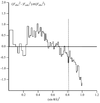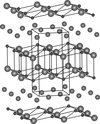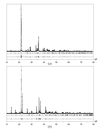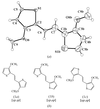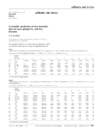issue contents
December 2003 issue

Cover illustration: Orange polytypically disordered crystals of HgI2 are built from layers of corner-linked Hg4I10 supertetrahedra. The stacking disorder has been quantitatively analyzed with a Markov chain model. Two probabilities describing next-nearest-layer interactions were adjusted to observed diffuse intensity profiles extracted from image-plate detector data. Results show nearly equal volumes of the two maximum degree of order structures, with an average domain thickness of about 5 layers or 30 Å [Hostettler, Birkedal & Schwarzenbach (2002), Acta Cryst. B58, 903-913].
research papers










Single-crystal structure refinement of NaTiSi2O6 clinopyroxene at low temperatures (298 < T < 100 K)












addenda and errata



 journal menu
journal menu











